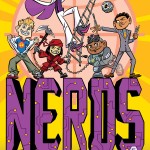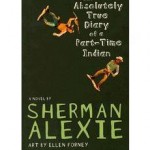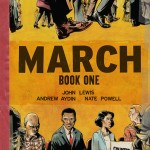What Children’s Authors Make Of Common Core And Education Policy

Sammy Mack / StateImpact Florida
Miami Book Fair International brought more than four dozen children’s authors to Florida over the weekend
More than four dozen contemporary young adult and children’s authors were in Florida over the weekend for Miami Book Fair International.
As Common Core State Standards for English and language arts are putting a national spotlight on what kids read in class, many of those authors are thinking about the way literature is taught in school—and how that’s changing.
StateImpact Florida spoke with several authors about how the new standards and other education policies shape the way they write.
Children’s author Michael Buckley has spent a lot of time thinking about bullies. He’s the bestselling author of the NERDS series, which features a bunch of nerdy kids who deal with bullies during the school day and moonlight as top-secret superheroes the rest of the time.
“How hard it must be to be a teacher in the United States. Every four years some new knucklehead gets elected and then tells everybody that they’re doing their job completely wrong and we’re going to have to fix the whole educational system,” says Buckley. “So every four years I think writers for children have to evolve a little bit, too.”
He says the Common Core emphasis on nonfiction in particular is changing expectations of children’s writers.
“Fiction is the bread and butter of most of us and now they want us to write nonfiction, which I don’t know how I’m going to do that,” says Buckley “What I fear is that we’re so dedicated to making testing the priority that books and the love of books, there’s just no time for it.“
Sheila Keenan, author of a new graphic novel for kids, called Dogs of War, says she tries not to think too much about classroom policies when she writes.
“Good storytelling is good storytelling,” says Keenan.
Her latest work is about the relationships between soldiers and dogs during World War I, World War II and the Vietnam War. It’s fiction, but she did a lot of research to make sure it was historically accurate.
“I think it straddles some of the intents of Common Core in a way kids really like because a lot of kids like war stories, adventure stories, and it has all of that to it, but it also has a good deal of information in it,” says Keenan—though she’s not without her reservations about all the new standards.
“I just wish there were no rules about it. Let kids read whatever they want to read. Often I talk to kids and they’ll say aw I have to read 16 pages tonight. I’m like, who reads a book by 16 pages? Nobody,” says Keenan. “The joy of reading has to come first.”
Sherman Alexie is also passionate about letting kids read whatever they connect with. Alexie is the author of a number of books including the best-selling young adult novel, Absolutely True Diary of A Part-Time Indian. It won a National Book Award and, in a few places, it’s also been banned—which, Alexie says, means he was doing something right.
“Percival Everett, the writer, always says that if you’re getting banned then you’re offending the right monsters… Repressive, conservative, religious freaks who want to control everybody’s reading material—not just their children’s,” says Alexie.
“I wish that politicians would spend more time in the classroom. We would be better politicians, better political leaders, if we just spent a little more time with children,” says Georgia Congressman John Lewis, who is on a book tour for March, his graphic novel for kids.
He co-wrote the story about his experiences as a leader in the Civil Rights Movement with Andrew Aydin and New York Times best-selling artist Nate Powell. March is the March on Washington.
Lewis says when he was a young man, it was a comic book, The Montgomery Story, that changed his life.
“I am the person that I am today because of the stories of people coming together in a peaceful, organized fashion to stand up and fight for what they believed in,” says Lewis.
Lewis hopes his writing can have that kind of effect on a whole new generation.




